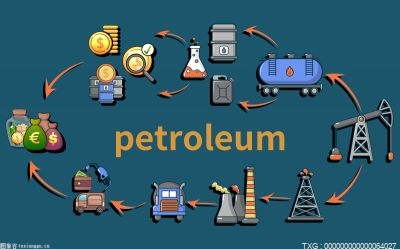IEA:2023年全球清洁能源支出将达1.7万亿美元-关注
中国石化新闻网讯 据油气新闻网5月27日报道,2023年,全球对清洁能源的投资将增至1.7万亿美元,太阳能投资将首次超过对石油生产的投资。
据IEA的一份新报告称,由于全球能源危机引发的可负担性和安全担忧加强了支持更可持续能源选择的趋势,清洁能源技术的投资远远超过化石燃料支出。
根据IEA最新的《世界能源投资报告》,2023年,全球将在能源方面投资约2.8万亿美元,其中超过1.7万亿美元将用于清洁技术,包括可再生能源、电动汽车、核能、电网、存储、低排放燃料、效率提高和热泵。
 (资料图)
(资料图)
据该报告称,剩余略高于1万亿美元的费用将用于煤炭、天然气和石油。
在可再生能源和电动汽车的推动下,2021年至2023年间,清洁能源年度投资预计将增长24%,而同期化石燃料投资增长15%。
但该报告补充道,其中90%以上的增长来自发达经济体和亚洲,如果其他地方不加快清洁能源转型,全球能源将面临新的分界线的严重风险。
IEA表示,清洁能源的发展速度很快,比许多人意识到的要快。这在投资趋势中很明显,清洁技术正在从化石燃料中撤出。
IEA认为,现在每投资一美元在化石燃料上,就有大约1.7美元用于清洁能源。五年前,这一比例是一比一。一个突出的例子是对太阳能的投资,将首次超过对石油生产的投资。
以太阳能为主导的低排放电力技术预计将占发电投资的近90%。
消费者也在投资于更多电气化的最终用途。据IEA的报告称,自2021年以来,全球热泵销量实现了两位数的年增长,而电动汽车销量在2022年激增后,预计今年将跃升三分之一。
近年来,清洁能源投资受到多种因素的推动,其中包括经济强劲增长和化石燃料价格波动,这引发了对能源安全的担忧。
据该报告称,通过美国《通胀削减法案》等重大行动以及欧洲、日本等其他地方的举措加强的政策支持也发挥了作用。
预计2023年上游油气支出将增长7%,恢复到2019年的水平。投资超过疫情前的少数几家石油公司大多是中东地区的大型国有石油公司。
报告称,由于燃料价格上涨,许多化石燃料生产商去年获得了历史最高水平的利润,但大部分现金流都用于分红、股票回购和偿还债务,而不是回到传统的供应中。
尽管如此,化石燃料投资的预期反弹意味着,2023年,化石燃料投资将增加到国际能源署2050年净零排放愿景中2030年所需水平的两倍以上。全球煤炭需求在2022年达到历史最高水平,今年的煤炭投资有望达到2030年净零愿景所设想水平的六倍多。
数据显示,2022年,石油和天然气行业在清洁电力、清洁燃料和碳捕获技术等低排放替代品上的资本支出不到其上游支出的5%。
这一水平与去年相比几乎没有变化——尽管一些较大的欧洲公司的份额更高。
清洁能源投资的最大缺口是新兴经济体和发展中经济体。有一些亮点,例如印度对太阳能,巴西和中东部分地区对可再生能源的动态投资。
然而,许多国家的投资受到利率上升、政策框架和市场设计不明确、电网基础设施薄弱、公用事业财务紧张以及资本成本高等因素的阻碍。
国际社会还需要做更多的工作,特别是在推动私营部门一直不愿冒险的低收入经济体的投资方面。
郝芬 译自 油气新闻网
原文如下:
Global spend on clean energy to hit $1.7 trillion in 2023:IEA
Global investment in clean energy is on course to rise to $1.7 trillion in 2023, with solar set to eclipse oil production for the first time.
Investment in clean energy technologies is significantly outpacing spending on fossil fuels as affordability and security concerns triggered by the global energy crisis strengthen the momentum behind more sustainable options, according to a new IEA report.
About $2.8 trillion is set to be invested globally in energy in 2023, of which more than $1.7 trillion is expected to go to clean technologies – including renewables, electric vehicles, nuclear power, grids, storage, low-emissions fuels, efficiency improvements and heat pumps – according to the IEA’s latest World Energy Investment report.
The remainder, slightly more than $1 trillion, is going to coal, gas and oil, it stated.
Annual clean energy investment is expected to rise by 24% between 2021 and 2023, driven by renewables and electric vehicles, compared with a 15% rise in fossil fuel investment over the same period.
But more than 90% of this increase comes from advanced economies and Asia, presenting a serious risk of new dividing lines in global energy if clean energy transitions don’t pick up elsewhere, the report added.
IEA said: "Clean energy is moving fast – faster than many people realise. This is clear in the investment trends, where clean technologies are pulling away from fossil fuels."
"For every dollar invested in fossil fuels, about $1.7 is now going into clean energy. Five years ago, this ratio was one-to-one. One shining example is investment in solar, which is set to overtake the amount of investment going into oil production for the first time," he added.
Led by solar, low-emissions electricity technologies are expected to account for almost 90% of investment in power generation.
Consumers are also investing in more electrified end-uses. Global heat pump sales have seen double-digit annual growth since 2021, while electric vehicle sales are expected to leap by a third this year after already surging in 2022, said the IEA report.
Clean energy investments have been boosted by a variety of factors in recent years, including periods of strong economic growth and volatile fossil fuel prices that raised concerns about energy security, especially following the war.
Enhanced policy support through major actions like the US Inflation Reduction Act and initiatives in Europe, Japan and elsewhere have also played a role, it stated.
Spending on upstream oil and gas is expected to rise by 7% in 2023, taking it back to 2019 levels. The few oil companies that are investing more than before the Covid-19 pandemic are mostly large national oil companies in the Middle East.
Many fossil fuel producers made record profits last year because of higher fuel prices, but the majority of this cash flow has gone to dividends, share buybacks and debt repayment – rather than back into traditional supply, it said.
Nonetheless, the expected rebound in fossil fuel investment means it is set to rise in 2023 to more than double the levels needed in 2030 in the IEA’s Net Zero Emissions by 2050 Scenario. Global coal demand reached an all-time high in 2022, and coal investment this year is on course to reach nearly six times the levels envisaged in 2030 in the Net Zero Scenario.
According to IEQA, the oil and gas industry’s capital spending on low-emissions alternatives such as clean electricity, clean fuels and carbon capture technologies was less than 5% of its upstream spending in 2022.
That level was little changed from last year – though the share is higher for some of the larger European companies.
The biggest shortfalls in clean energy investment are in emerging and developing economies. There are some bright spots, such as dynamic investments in solar in India and in renewables in Brazil and parts of the Middle East.
However, investment in many countries is being held back by factors including higher interest rates, unclear policy frameworks and market designs, weak grid infrastructure, financially strained utilities, and a high cost of capital.
Much more needs to be done by the international community, especially to drive investment in lower-income economies, where the private sector has been reluctant to venture.
(责任编辑:黄振 审核:蒋文娟 )X 关闭
推荐内容
- 广西3.8亿元专项资金 支持漓江流域横向生态补偿
- 连续5年高于行业平均增幅 中国电信发布2021年业绩报告
- 司法协作解难点 协同发展新亮点
- 中央党校(国家行政学院)举行二〇二一年秋季学期毕业典
- “助力冰雪运动进一步发展”(相约北京冬奥)
- 世卫组织肯定北京冬奥会疫情防控措施
- 树立发展合作新范本
- “让世界更加了解当今中国”
- 为全球数字治理贡献中国智慧
- 通过高水平开放寻求互利共赢(国际论坛)
最近更新
-

IEA:2023年全球清洁能源支出将达1.7万亿美元-关注
滚动 -

世界头条:福建推进建筑垃圾资源化利用
滚动 -

永义国际(01218)附属高山(00616)拟配售最多5000万股 持股比例将摊薄至26.59% 5月31日复牌 全球速递
滚动 -

口袋妖怪漆黑的魅影攻略二周目攻略 口袋妖怪漆黑的魅影攻略-全球新要闻
滚动 -

春季钓鱼技巧 春季钓鱼技巧总结 当前速读
滚动 -

花旗投资银行业务联合主管:对债务上限协议前景感到“谨慎乐观”
滚动 -

环球速讯:从金晨到景甜再到张蕊,张继科是眼光变了,还是光环褪了
滚动 -

环球百事通!互联网电商板块5月30日涨0.39%,若羽臣领涨,主力资金净流入2976.21万元
滚动 -

【天天聚看点】郭晶晶终于认真打扮!钻石上衣配小黑裙好惊艳,同框巩俐不输气场
滚动 -

罗马诺:德泽尔比1月要凯塞多留队承诺夏天出售,3支球队竞争他|环球实时
滚动 -

困境儿童微心愿认领活动进行中 百余名孩子盼您捐赠“六一礼物”
滚动 -

焦点速递!加纳乔:帮助球队并代表曼联出战是一种荣幸,温布利见!
滚动 -

环球今头条!研究发现:打高尔夫球的首席执行官不太可能有女性
滚动 -

户籍查询系统怎么使用?怎么用身份证查犯罪记录?
滚动 -

北京城市副中心行政办公区工程建设办公室原主任郑志勇被查
滚动 -

天天速看:htc3g手机怎么装卡_我想换手机HTCg13好吗
滚动 -

焦点信息:中介办理停息挂账费用是多少?停息挂账还需要收手续费吗
滚动 -

今热点:拒绝爆冷!冠军大热鲁德没有出意外,贾巴尔状态火爆勇闯法网第2轮
滚动 -

Abstract Factory Pattern 抽象工厂模式简介与 C# 示例【创建型】【设计模式来了】
滚动 -

侨银股份最新公告:预中标约7988万元环卫作业服务项目_全球微动态
滚动 -

青农商行能否讨回青岛前首富的9亿欠款?
滚动 -

中考推荐生是什么意思 怎么算成绩的|天天热议
滚动 -

全球看点:百达智能拟投资1000万设立全资子公司绵阳堇创科技有限公司
滚动 -

世界观天下!五十知天命六十花甲七十古稀八十(六十花甲七十古稀八十)
滚动 -

当前热讯:隆基绿能要打价格战?
滚动 -

衡水市教育局、衡水中学联合推出心理剧微视频《你自己》_今日快讯
滚动 -

经济活力加速释放 外资企业对中国营商环境满意度较高 环球看点
滚动 -

烟台二手车市场,烟台二手车市场地址|全球今亮点
滚动 -

观天下!PS港服优惠活动官宣:会员75折、手柄游戏优惠等
滚动 -

全球新资讯:勇气和斗志一样都不能少
滚动 -

北京三星新荣记和杭州一星新荣记,炸的带鱼有区别吗?米其林杭州榜出街,网友怎么看 当前短讯
滚动 -

全球热门:龙宽的洗衣机九歌
滚动 -

天天关注:美年健康(002044)5月30日主力资金净卖出1284.30万元
滚动 -

城管当街打骂货车司机!官方通报:停职检查
滚动 -

4S店的试乘试驾车一般多久出售?购买时需注意,一定检查好手续
滚动 -

沪电股份:不好意思,公司受商业政策限制,未经许可我们不便讨论具体的公司,敬请见谅
滚动 -

官方平台“一票难求” 加价倒票“大行其道”|环球热讯
滚动 -

推出“吉快金融”信贷产品,延边农商行举办相关业务培训班
滚动 -

最挑战想象力的贴纸书:各种各样的形状(对于最挑战想象力的贴纸书:各种各样的形状简单介绍)-头条焦点
滚动 -

世界热门:古人称男子三十岁为什么之年_古人称男子三十岁为
滚动 -

思皓变为“弃子”已成定局,钇为能把江淮汽车带出泥潭吗?
滚动 -

考生档案所在单位名称要具体到学院吗 考生档案所在单位名称
滚动 -

每日讯息!正好侃球丨“潜伏球迷”与“幸运儿”的共同呐喊:我们永远战斗在这里
滚动 -

环球精选!天津市滨海新区领导深入恒驰汽车天津工厂开展调研服务
滚动 -

周鸿祎:GPT是生产力工具
滚动 -

新邵中学生沉浸式体验国防教育-环球热资讯
滚动 -

当前信息:低碳节俭 亚运村运动员餐厅基建改造完成
滚动 -

环球即时:超大曲面屏+轿跑造型的个性之车 静态体验凯迪拉克GT4
滚动 -

哈投股份今日大宗交易溢价成交3186.24万股 成交额1.74亿元|环球速讯
滚动 -

正有理数和零统称为 正有理数|环球热闻
滚动 -

世界报道:魔域吸血鬼
滚动 -

苏州第二批集中供地:剩余7宗地块因系统原因中止出让 当前热讯
滚动 -

【全球时快讯】天合光能:拟107亿元投建年产25GW单晶拉棒及配套项目
滚动 -

结直肠癌发病率和死亡率居高不下,如何优化早筛方案
滚动 -

代书遗嘱的有效性是什么?|当前热点
滚动 -

大和:下调美团目标价至170港元 评级买入-全球报资讯
滚动 -

安医大新医科中心附属小学和中学建设有新进展
滚动 -

香港恒生指数收跌1.04% 恒生科技指数跌1.19% 焦点资讯
滚动 -

6月1日,这家医院的地铁接驳线来了
滚动 -

十个征兆说明肾功能在下降_年轻人为什么会肾衰竭|世界快资讯
滚动 -

奥比圈怎么发图片_奥比圈_天天播资讯
滚动 -

焦点热议:5月29日热点题材概念分析:脑机接口、云游戏领涨
滚动 -

5月29日国内盐酸市场行情暂稳 世界实时
滚动 -

印度阿杰梅尔:沙尘来袭 环球热文
滚动 -

(青山共风雨)独家-2023年5月30日十二生肖每日运程
滚动 -

上饶一烟酒店一夜之间被扫荡一空 7名嫌疑人被“一锅端”|全球速递
滚动 -

精锻科技:华西证券、华安基金等多家机构于5月25日调研我司
滚动 -

环球热讯:我心目中的好老师绘画图片_我心目中的好老师绘画
滚动 -

全球球精选!4-2!孙颖莎夺得世乒赛单打冠军,逆转国乒队友!陈梦功亏一篑
滚动 -

首届体育运动与健康大会在京召开,科学运动预防慢性疾病 环球关注
滚动 -

DSCC:近两年 OLED 电视将迎来大降价
滚动 -

商水:阳城办迅速行动确保应收尽收颗粒归仓|全球观察
滚动 -

人脑工程板块开盘大涨 新智认知一字涨停
滚动 -

全球实时:宝格丽项链可以刻字吗 宝格丽项链的刻印都有什么
滚动 -

财政部下达水利救灾资金7.28亿元 天天热点
滚动 -

第七届中国民营企业合作大会召开 签约金额超千亿元
滚动 -

口袋妖怪绿宝石胡地配招_胡地配招
滚动 -

世界今亮点!步步高升的意思是什么_步步高升的意思
滚动 -

中老铁路旅客发送量达1600万人次
滚动 -

环球热门:2022年01月06日最新发布:谷歌的Home音箱可以取代Nest品牌
滚动 -

焦点快看:爱的艺术读后感结尾(爱的艺术读后感)
滚动 -

守寺比丘|天天观察
滚动 -

美国众议院议长麦卡锡表示,超过95%的众议院共和党人对债务上限协议感到非常兴奋_百事通
滚动 -

【环球报资讯】汪嵩发文:成都球迷让我三度哽咽强忍泪水,生涯无冠但也不算遗憾
滚动 -

当前最新:传奇女星宣布取消所有演出!病情至今无好转,这种疾病极容易被误诊
滚动 -

动态焦点:宝宝发烧怎么办?才退烧_宝宝发烧怎么办37.5
滚动 -

【速看料】江苏省徐州市2023-05-28 10:39发布暴雨蓝色预警
滚动 -

Redmi k40pro屏幕的峰值亮度是多少? 全球信息
滚动 -

当前关注:长三角小龙虾产业论坛在盐城市举办
滚动 -

骚白是快手一哥吗_王者荣耀直播一哥是快手骚白
滚动 -

世界消息!魔狱之恋_关于魔狱之恋简述
滚动 -

祝愿高考顺利的话_给高三学生的祝福语
滚动 -

传统产业的新发展
滚动 -

这个非洲国家,将引发全球可乐“断供”?-世界快消息
滚动 -

猝死是什么原因造成的_猝死的根本原因是什么
滚动 -

物语系列动漫时间顺序 物语系列动漫观看顺序 当前通讯
滚动 -

emp途径详细图_emp途径
滚动 -

利润降幅继续收窄 多数行业盈利改善——工业生产保持恢复态势 热资讯
滚动 -

马自达CX-50行也上市:15.98万起售 终身免费质保
滚动 -

今日讯!婳 关于婳的介绍
滚动
Copyright © 2015-2022 北极机械网版权所有 备案号:浙ICP备2022016517号-19 联系邮箱:514 676 113@qq.com


